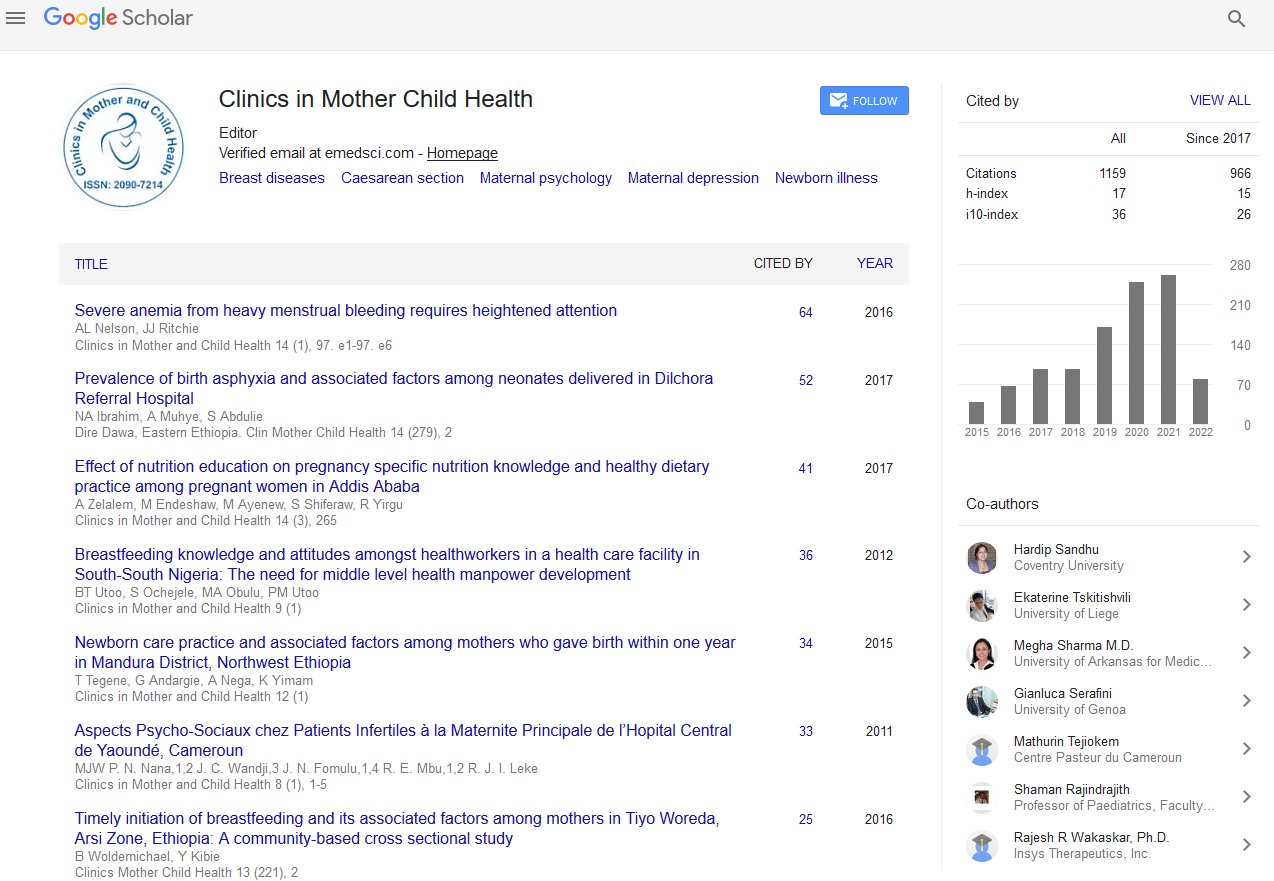Indexed In
- Genamics JournalSeek
- RefSeek
- Hamdard University
- EBSCO A-Z
- Publons
- Geneva Foundation for Medical Education and Research
- Euro Pub
- Google Scholar
Useful Links
Share This Page
Journal Flyer

Open Access Journals
- Agri and Aquaculture
- Biochemistry
- Bioinformatics & Systems Biology
- Business & Management
- Chemistry
- Clinical Sciences
- Engineering
- Food & Nutrition
- General Science
- Genetics & Molecular Biology
- Immunology & Microbiology
- Medical Sciences
- Neuroscience & Psychology
- Nursing & Health Care
- Pharmaceutical Sciences
Abstract
The Prenatal and Perinatal Risk Variables of the Sensory Processing Disorder
Magdalena Szczepara-Fabian, Ewa Emich-Widera, Beata Kazek, Aleksandra Kaniewska and Justyna Paprocka
Sensory Processing Disorder has a negative effect on a child’s functioning. The etiology and pathomechanics of sensory processing disorder has not yet been fully identified. The prenatal and perinatal variables have been described as the significant causes. The purpose of this work was to determine the most common and presently occurring prenatal and perinatal problems that may serve as the predictors of SPD. The studied group consisted of 89 children with identified sensory processing disorder and no other neurological disorders. The control group consisted of 88 children within the same age group which were healthy and did not suffer from the sensory processing disorder. The retrospective data from the prenatal and perinatal periods were collected through a questionnaire, prepared specifically for the purpose of this project.
Besides that, the complex assessment of the children consisted of a pediatrics neurologic and physiotherapy/SI diagnosis examination. The age appropriate checklist, prepared by the American Occupational Therapy Association, has also been used. In the case of children between the ages of 7 months to 3 years old, Georgia A. De Gangi’s Infant-Toddler Symptom Checklist was applied. Furthermore, during the examination, the therapist applied the Clinical Observation Checklist as well as the South Carolina Sensory Integration Tests trials for the children above 4 years old. It has been demonstrated that there is a predilection towards the type of sex in sensory processing disorder, and it occurs three times more frequently among boys than among girls, in the studied group. Among all analyzed variables, six of them occurred statistically significantly more frequently in the group with the sensory processing disorder. Considering the frequency of occurrence, those variables included the following: a low birthweight, a low Apgar score at 1 min, infections and cervical insufficiency, and, less frequently occurring, placental abruption. The multivariable analysis demonstrates that the concurrence of two out of six risk variables with the highest prediction results in 80% probability of the emergence of sensory processing disorder, and the concurrence of 3 variables results in 90% of that probability. Our research study results indicate that the children with the prenatal and perinatal history should be under a specialized multidisciplinary supervision at least until they start school. In case of the concurrence of two and more variables, such supervision should be mandatory.


